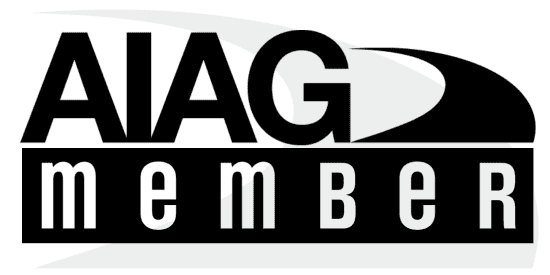Commercial Vehicle Powertrains – Quo-Vadis?

As the commercial vehicle industry undergoes a seismic shift toward sustainability, innovation and strategic foresight have never been more critical. In this exclusive interview, we speak with Daniel Rundgren, a seasoned expert in digital transformation and mobility, who has played a key role in groundbreaking projects such as Volkswagen’s e-Delivery truck in Brazil.
1. For those who haven’t been introduced to you, who are you and what is your background?
I’m located in Gothenburg, Sweden, and have over two decades of experience in the technology and business development sectors, focusing on innovation and digital transformation. My career includes leadership roles such as SVP and President within IT, Digital, and Engineering Services organisations like EVRY, and Semcon. In these roles, I supported customers across various industries like automotive and mobility, working on various transformative projects, from implementing digital solutions to driving strategic growth. A few years ago, I founded EQUIT, a consulting firm specialising in M&A, post-merger integration, and corporate finance. My work at EQUIT focuses on helping companies navigate complex transitions and capitalise on opportunities for sustainable growth, enabling them to align their strategies with the evolving demands of the market.
One example of such transformative collaboration is the Volkswagen e-Consortium in Brazil, where Semcon partnered with Volkswagen Caminhões e Ônibus to develop the e-Delivery truck—the first electric truck manufactured in the country. As part of the e-Mobility consortium, Semcon contributed with engineering expertise in electrification, mechanics, product engineering, and structural analysis. The e-Delivery truck, a small vehicle capable of transporting up to 14 tonnes with a range of 100 kilometres, features brakes that recharge the batteries during operation. This partnership demonstrates how innovative collaborations can address the unique challenges of heavy-duty electric vehicles while driving sustainability in commercial transport.
2. In your current role, what is your relation to the future of commercial vehicles and transport?
As vehicle digitalisation has become a priority, I have increasingly engaged with the industry as part of my advisory work. My role focuses on helping businesses navigate market demands and identify sustainable strategies for growth. Recently, I have collaborated with Brudeli Green Mobility to support expanding their innovative hybrid technology for commercial vehicles, particularly in securing the capital needed to accelerate their market entry and adoption.
3. We have seen a rapid development of new hybrid and EV offers for consumers of passenger cars but in the commercial vehicle sector diesel is still dominating. Why is that, in your opinion?
While significant advancements have been made in battery-electric technology, a comprehensive analysis of its applicability to commercial traffic is still evolving. In many use cases, battery-electric trucks are not yet practical solutions due to operational challenges such as long-haul transport, high-load demands, and frequent start-and-stop cycles. For a solution to be truly sustainable, it must simultaneously address environmental, economic, and social dimensions.
These limitations have often led to an underappreciation of hybrid solutions, which offer an effective middle ground by combining electric power for efficiency with combustion engines for reliability. Innovations, such as those developed by Brudeli Green Mobility, aim to bridge these gaps and provide solutions that meet the diverse operational needs of commercial fleet owners while supporting broader sustainability goals.
4. What role do you see for other powertrain solutions than pure diesel and pure battery electric, e.g., PHEV, H2, and E-fuels, for commercial vehicles?
Indeed, for many use cases, various e-fuels and bio-fuels will have to play a part, with or without hybridization. Other technologies currently under development must fill the vast gap between fossil diesel and pure electric solutions. Plug-in hybrids are particularly strategic in bridging this gap, offering a versatile solution that combines the benefits of electric power for urban and start-stop operations with the reliability of combustion engines for high-load and longer-distance routes. Depending on how the battery capacity is structured based on specific needs, hybrids can reduce emissions by up to 80% and, in some cases, operate purely on electric power. Hydrogen shows promise for heavy-duty and long-haul transport due to its energy density. At the same time, e-fuels can serve as a transitional option for operators looking to reduce emissions without overhauling existing fleets. Together, these solutions create a diverse and adaptable powertrain landscape, addressing the varied needs of commercial operators while supporting a gradual shift toward sustainability.
5. In order for hybrid offers to be increasingly requested by fleet operators and developed by OEMs, what needs to be in place?
There are mainly two things: Favourable regulations and incentives. Fleet owners will invest in what makes sense for them, and it is the joint responsibility of vehicle manufacturers, policymakers, power grid owners, and other stakeholders to shape a green future. This includes showcasing cost savings on fuel, maintenance, and potential tax benefits to make hybrids an attractive option. Clear regulations that incentivize lower emissions and provide subsidies or tax breaks for hybrid adoption will drive demand.
Collaboration among stakeholders is critical to ensure the necessary infrastructure, such as charging stations and energy distribution networks, is in place. Additionally, continued innovation in hybrid technology can address fleet operators’ key concerns, including range, payload capacity, and total cost of ownership. Educating fleet operators on the operational and financial advantages of hybrid solutions over their lifecycle will further encourage adoption and support a smoother transition to sustainable commercial transport.
6. How do you see digitalization being an enabler for the adoption of alternative powertrains, including hybrids?
Digitalization and AI can accelerate the adoption of alternative powertrains. Intelligent tools can help engineer high-performing vehicles, assist fleet owners in selecting the most suitable vehicles for their operations, and optimize fleet management and driver behaviour.
A significant aspect of this evolution is the emergence of Software-Defined Vehicles (SDVs), which enable advanced features such as over-the-air updates, real-time energy optimization, and tailored performance adjustments. These innovations allow fleet operators to adapt vehicles to specific needs, improving efficiency and reducing costs.
When applied correctly, AI and digital tools can also highlight the advantages of maintaining a diverse palette of powertrains, each optimized for different purposes. For example, predictive analytics can recommend hybrid solutions for urban and start-stop applications and long-haul operations, where hybrids can provide the efficiency and range required for heavy-duty scenarios. In parallel, hydrogen and electric options may complement specific use cases depending on infrastructure availability and operational requirements, such as access to refueling stations, energy grid readiness, or the need for extended range and payload efficiency.
By leveraging digitalization, the transport industry can achieve better resource utilization, enhanced operational efficiency, and a smoother transition to sustainable technologies.
7. How do you think the market will evolve in terms of commercial vehicle powertrains in the next 5-10 years?
Five years is a short time frame, given the development cycles and the lead times for infrastructure investments. However, hybrid commercial truck variants already exist today in limited forms, and within the next 5-10 years, we are likely to see more advanced and widely available hybrid truck offerings from major OEMs. These developments will signal a shift toward more sustainable transport solutions, though significant changes, such as widespread adoption of alternative powertrains across the industry, will take longer.
By 2050, the commercial vehicle market is estimated to consist of approximately 60% battery electric vehicles, 30% plug-in hybrids, and 10% diesel vehicles, with half of the latter running on green fuels. Achieving this balance will require not only advancements in vehicle technology but also the development of robust infrastructure and supportive regulations. This includes scaling up charging and refueling networks, ensuring energy grid readiness, and fostering collaborations between OEMs, policymakers, and fleet operators. If this trajectory is realized, it would represent a remarkable achievement for the transport industry and its journey toward sustainability.
Achieving this balanced mix of powertrains will require not only technological advancements but also harmonized global policies and cooperation among governments, industry leaders, and environmental organizations to establish clear targets, incentives, and standardized infrastructure frameworks.
The transport industry stands at the threshold of a transformative era, and I am excited to contribute to the innovations that will drive sustainability and growth in this dynamic sector.
picture: Daniel Rundgren


